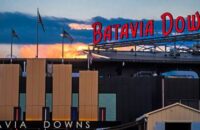Please click the link below to subscribe to a FREE PDF version of each print edition of the Niagara Reporter
http://eepurl.com/dnsYM9
By: Ken Hamilton
As many Niagarans celebrate the birthday of civil rights martyr the Rev. Dr. Martin Luther King, Jr., who died in Memphis TN while campaigning for the rights of a group of black municipal workers to receive equal employment conditions, there could be no better time for us to examine the state of Niagara Falls’ Black community as it relates to our own municipal government, school district, county government and beyond to every elected official and appointed administrator that impacts such. To fail to take an objective look at such, would not only be to have African-Americans thinking that we are in one place while we are really in another; but with the “black community” being 23% of the city’s population, it would be a grave disservice to all Niagarans not to do so.
This series will be largely historically based, describing not only where we are, but also how we got to being here.
And yes, names will be named; but only in their public service capacities and how they impacted the lives of the black community, the city and beyond – all the way up to the presidents.
Fasten your seat belts, for it ought to be a fun but informative ride.
While we should start at the level of government that is most specific, albeit the job itself is less impactful on black district residents – the county legislature and its legislators (many white legislators have also had impacts on “the community” we will start with the highest profiled Niagara Falls politician now serving, Mayor Paul Dyster.
Let me say straight away, though he is one of the few local politicians of which I either have never voted for and/or have never helped to get into or remain in office. I personally feel that that, even so, he deserves a fair hearing in all that he does or doesn’t do. Believe it or not, there are some things that he’s done of which I am appreciative; but there are clearly some things of which I believe could have been either left undone or reversed.
But because it is King’s birthday, a time to reflect not only upon his dream, but to also extend our minds beyond it, piercing through it like an arrow, to hit the targets beyond the targets. To do so, we must pull the bowstring back in order to propel the arrow forward.
KING DIED SO THAT CITY WORKERS COULD WORK
Somewhere in the boxes and filing cabinets are files and other information that I have where there just has to be additional historical data on employment statistics and stories of African-Americans working in city government. There are the stories of the first city black city department head Joseph Profit whom, as a result of him holding the position of head of the Department of Public works, he has a street named for him between Highland Avenue and 9th Street. Also there are the stories of Nadrue Braswell, deputy city clerk under Elsie Paradise, and Cynthia Baxter who actually had a stint as City Clerk – and you’ll never quest what black city councilman who voted to get rid of her. There are city administrators Bill Bradberry and Donna Owens. There are also school board members, other city councilmen, county legislators, state senators, comptrollers and even a governor who was black. Yet, the black community is where the black community is: and the State of the Black Community isn’t good – but there are some bright spots.
In examining the Dyster record, when it comes to the reason why King was in Memphis where he was shot, there, like thin gossamer clouds draped across the night sky, there do appear to be the twinkle of stars amidst them.
In examining the city’s EEO4 reports from 2009 and 2017, it would seem that a group of city workers known as the Niagara Falls-Six have indeed made some impact as a result of their discrimination lawsuit.
Whereas, in 2009, the city had 397 Type 16 jobs (239 full-time and 158 parttime) – assessor’s office, city clerk, code enforcement, community development, engineering, finance, HR, parks, public works, planning and environmental development, purchasing, and the public library (the library isn’t a city department, however it receives the bulk of its funding from the city, HR manages but doesn’t select its employees and the finance handles its finances). There were 27 black fulltime employees (17 men and 10 women) and among the 158 part-timers and temporary employees there were 25 black men and 10 black women.
However, on the 2017 EEO4 Report, there were no part-time/temporary jobs and 239 full-time employees, with 23 black men – a 35% increase; and 9 black women, an 11% decrease, but an overall 19% increase in black full-time hiring.
Not all of the public safety sector fared as well. In the type-4 jobs, Public Safety – Police, though the number of jobs was up from 163 in 2009 to 175 in 2017, there were 10 sworn officers in 2017 were black: 7-men and 3-women, with 3 black women in administrative support. In 2009 there were only 4 black men and 2 black women sworn officers in 2006; there were 3 black women in administrative support and technical. A 7% 2017 increase in the force yielded a 44% increase in black hiring.
In 2006 there were 140 NFFD employees with 3 black male smoke-eaters and one black woman in administrative support. In 2017 the department was down to 2-black males and no black females at all.
While the State of Black Employment in the city is as it is, with the public safety jobs being civil service, it is largely incumbent upon the 23% of city residents who are members of the black community to change the numbers of 19% of city jobs by being prepared to apply for the jobs, and applying yourself with a good education, no criminal record and the ability to pass the drug test. The State of the Black Community and King’s Dream are counting on you.























